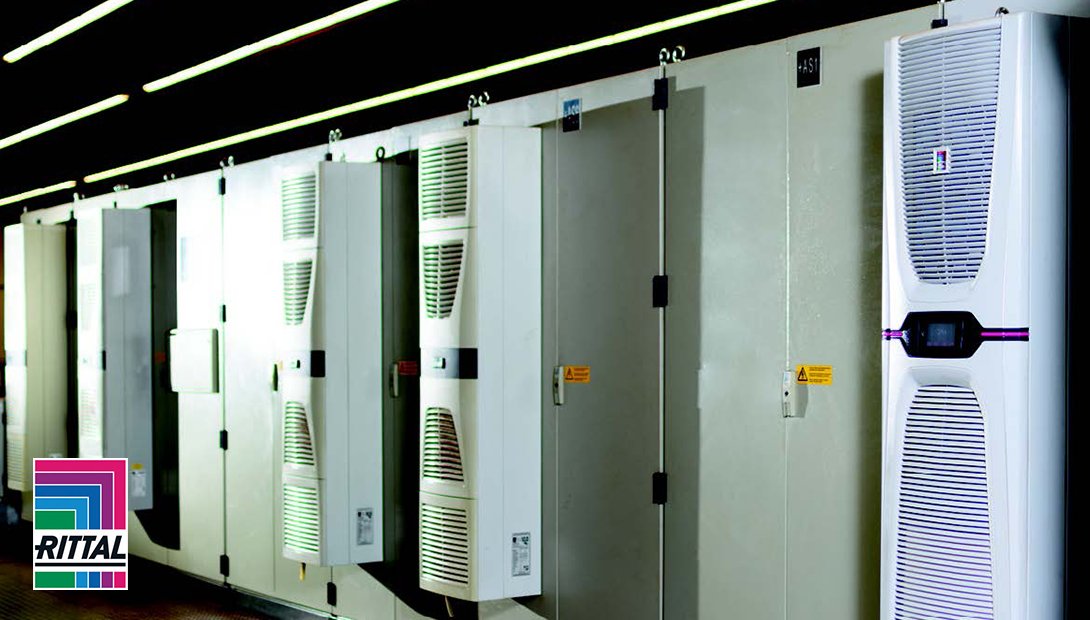
Austrian company now depends on energy-efficient cooling units from the Rittal Blue e+
One of the results of these energy checks was surprising, in some cases machines require less energy in order to move, than they need for climate control purposes. The company now depends on energy-efficient cooling units, from Rittal's Blue e+ series in order to dissipate heat from there enclosures. This also benefits their customers, who now have to document their energy management efforts in the context of an ISO 50001 certification.
STIWA constructs high-performance machines that operate with cycle times of far below one second. In addition to this core business the STIWA group’s skillset includes product and software development for production automation, the manufacture and supply of high-quality metal and plastic assemblies, as well as energy-efficient building technology and laboratory automation. The company currently operates eight factories in Austria, China, the USA and Germany. To meet the extremely demanding applications in mechanical engineering, components have to come from those manufacturers, who can keep up with the high standard. The company therefore performs numerous endurance tests, so that it does not to have to rely on information from the manufacturers themselves.
Manufacturer specifications exceeded
The new Rittal Blue e+ cooling unit series was also subjected to these endurance tests. STIWA has been keeping an eye on the energy efficiency, of their climate control units for some years now. A few years ago STIWA changed over from using Rittal ‘Top Therm’ to Rittal ‘Blue e’ units. As a result, energy savings in the five figures could be achieved, over the entire service life of a large machine with about 30 climate control units. STIWA was initially very skeptical as to whether any further savings could be achieved at all when it introduced the Blue e+ devices. This was followed by in-house tests in a production environment, to verify the 75 percent energy savings that Rittal has stated. To verify Rittal's findings, Blue e+ devices were installed in a variety of enclosures and the values were then measured. The results from the devices exceeded Rittal’s own figures providing energy savings of 80 percent.
“The potential savings achieved when changing from the ‘Top Therm’
to the ‘Blue e’ were good, but this gain has even been surpassed with the ‘Blue e+’.” - Stefan Baier, Head of Electrical Engineering, Product Management, STIWA Automation
Hybrid cooling is the key
The enormous energy savings result from the devices unique hybrid technology. Rittal's technology compromises of a compressor cooling unit and a heat pipe. Neither a compressor nor a pump is called for when cooling with the passive heat pipe so that very little energy is consumed. The compressor is only used when passive cooling is no longer sufficient. Since all the compressor cooling drives are speed-controlled, their operation is also very energy-efficient. These high efficiency devices, also have a number of other advantages. Thanks to the patented multi-voltage capability, the units can be operated flexibly in all standard grids worldwide, this also reduces the time needed for project planning.
Fit to be officially certified
Through using Rittal's blue e+ technology, STIWA is helping it's customers to achieve ISO 50001 certification. Although individual machines cannot be certified separately, customers are provided with the necessary characteristic data. STIWA as a company guarantees that all their components that are used originate solely from manufacturers active in the field of energy management, as is the case with Rittal.
To keep up to date on all the latest cooling topics over the next few months register your interest below:
Register For Cooling Updates Here
To download the Rittal WHITE PAPER: The Perfect Climate Control Inside your Enclosure, follow the link below:
To learn more about Rittal's next generation of cooling technology, take a look at this latest blog post:
Rittal's cooling technology blog post


